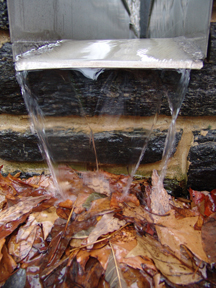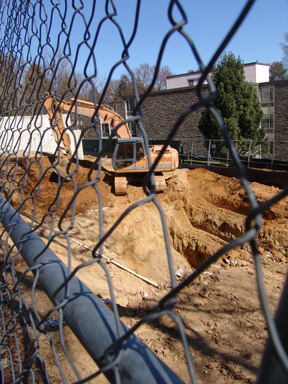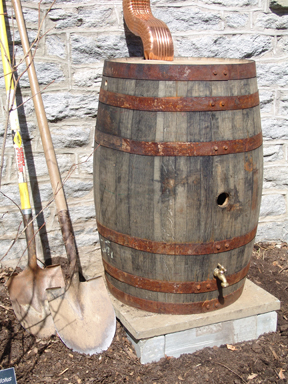Controlling Storm Water Runoff
This week with severe thunderstorms, spontaneous downpours, and overflowing storm drains, it has reinforced the importance of storm water management. It is important to prevent as much runoff from storm water on your property as possible to allow for the replenishment of ground water and prevent erosion of local streambeds.
Rain water runoff carries not only topsoil, but fertilizers, pesticides, oils, and other pollutants into the surrounding creeks and streams. Once in our waterways, these contaminants cloud the water, stress aquatic life, and disrupt stream habitats.
The Scott Arboretum and Swarthmore College‘s latest effort to reduce rainwater runoff is the installation of a 7,000 gallon cistern behind the Wister Education Center and Greenhouse. The rainwater is collected through the gutter system of Wister Center and the rear gutter system of Cummingham House (Scott Arboretum Offices) into the tank.
This water will then be used to irrigate the gardens around Wister Center. Overflow from the cistern will be discharged in the BioStream, another storm water management effort. This installation is another component of our efforts to receive silver LEED certification for the Wister Center.
You can collect the runoff from your own property with a rain barrel and, in turn, use the collected water to irrigate your containers and garden. In areas where you have standing water or flowing water during a storm, you might consider planting a rain garden, such as the BioStream, to allow runoff to infiltrate back into the ground.








Jared Barnes
Posted at 11:30h, 13 JuneNice planning for water runoff. Ah, I love that barrel!
Yvonne LeFever
Posted at 21:00h, 24 JanuaryNice!
Becky Robert
Posted at 13:47h, 30 JanuaryThank you Yvonne. We just posted some fun water wall photos on facebook about some of our other rain water beauty.
Becky Robert
Scott Arboretum